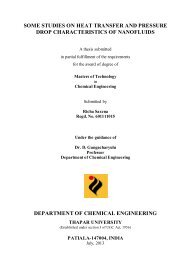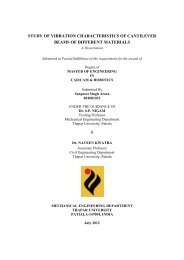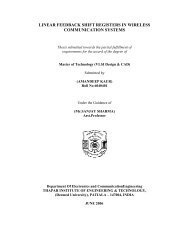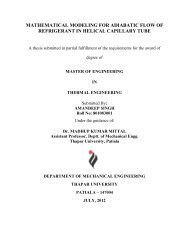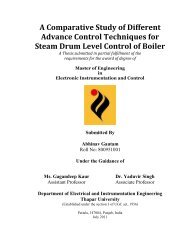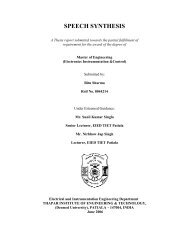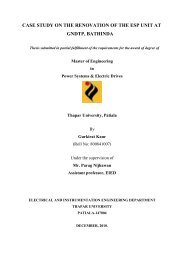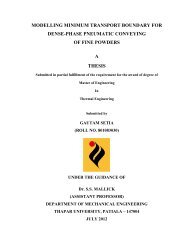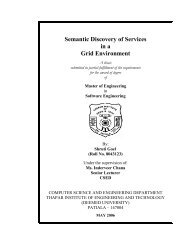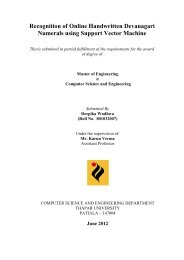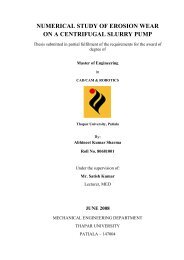from indigenous fermented foods and human gut ... - Thapar University
from indigenous fermented foods and human gut ... - Thapar University
from indigenous fermented foods and human gut ... - Thapar University
You also want an ePaper? Increase the reach of your titles
YUMPU automatically turns print PDFs into web optimized ePapers that Google loves.
139<br />
Chapter V Discussion<br />
peptide was around 2.5 kDa as observed by Tricine-SDS-polyacrylamide gel electrophoresis.<br />
The amino acid sequence of bacteriocin by Edman degradation was<br />
TRSGNGVCNNSKCWNVGEAKENIAGIVISGKASGL. Based on available evidence, the<br />
bacteriocin was ascribed to the Class IIa Pediocin like bacteriocins.<br />
Moreover 20 pediocin like peptides have been characterized till date (Nes et al., 2001;<br />
Nissen-Meyer et al., 1997). They have anti-Listeria activity <strong>and</strong> inactivate target cells by<br />
permeabilizing the cell membrane (Moll et al., 1993; Chikindas et al., 1993). Pediocin-like<br />
bacteriocins have similar sequences; especially in their N-terminal region. They all have a<br />
disulfide bridge <strong>and</strong> a common YGNGV/L sequence “pediocin box” motif. Besides, they<br />
have very similar amino acid sequences, especially in their cationic <strong>and</strong> hydrophilic N-<br />
terminal half. The sequences of their hydrophobic/amphiphilic C-terminal half are somewhat<br />
more diverse, <strong>and</strong> as a consequence the peptides have been grouped into three subgroups,<br />
based on the sequence similarities <strong>and</strong> differences in the C-terminal half (Morisset et al.,<br />
2004; Fiml<strong>and</strong> et al., 2002). To underst<strong>and</strong> the mechanism of inactivation, two important<br />
food borne pathogens, S. typhimurium <strong>and</strong> S. flexneri 2a were chosen. The prevalence of both<br />
the pathogens in the Indian subcontinent accords sufficient relevance in examining<br />
inactivation methods using the purified bacteriocin. Analysis showed that the pathogens<br />
treated with bacteriocin exhibited destruction of the cell membrane <strong>and</strong> extraction of cell<br />
contents. Other studies have reported a change in cell shape <strong>from</strong> bacilli to coccoid, which<br />
has been associated with a loss of infectivity (Rollins <strong>and</strong> Colwell, 1987). Though a shift to a<br />
coccoid form was not observed by electron microscopy, in these sense previous reports have<br />
indicated similar differences upon the transformation of bacillary forms to coccoid forms<br />
through the processing or degradation of existing proteins (Takeuchi et al., 1998), it is<br />
possible that bacteriocin changed the morphology of the pathogens <strong>from</strong> bacilli to cocci.



